Labour Law 1. Labour Legislation 2. Employment &

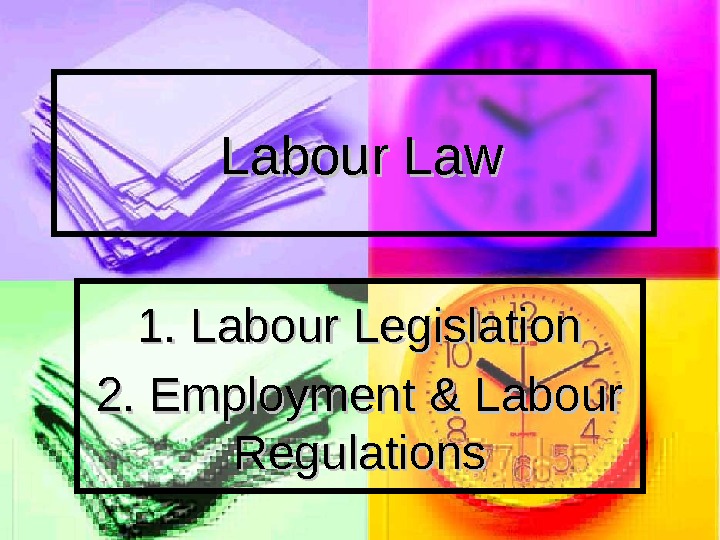
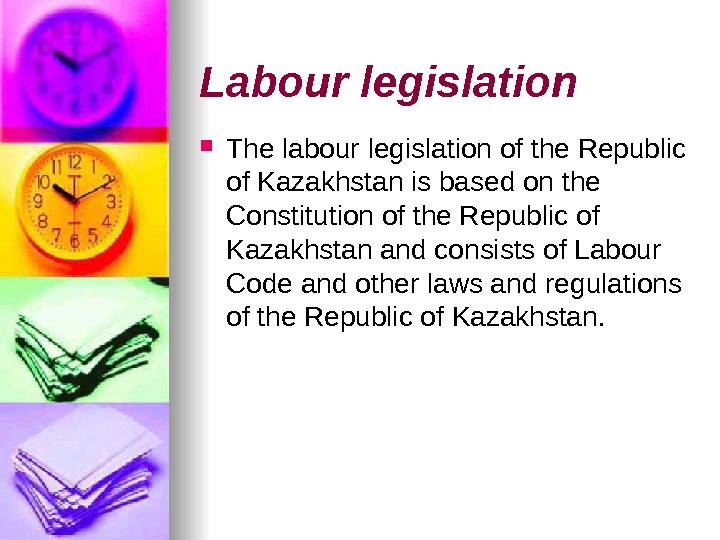
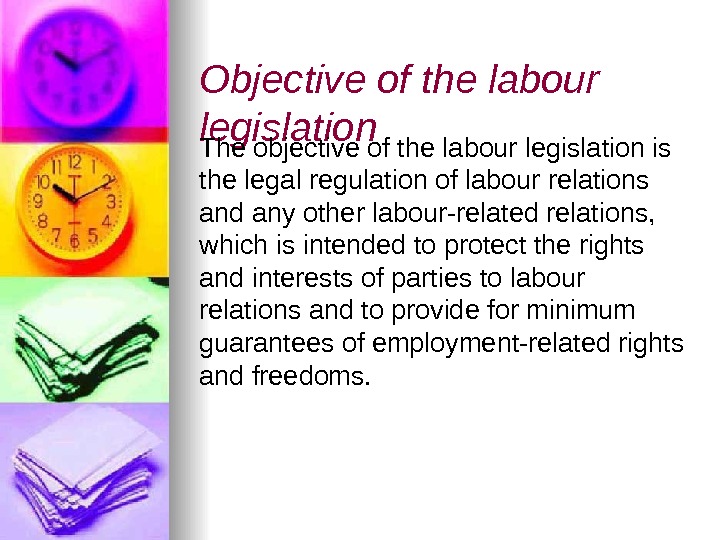

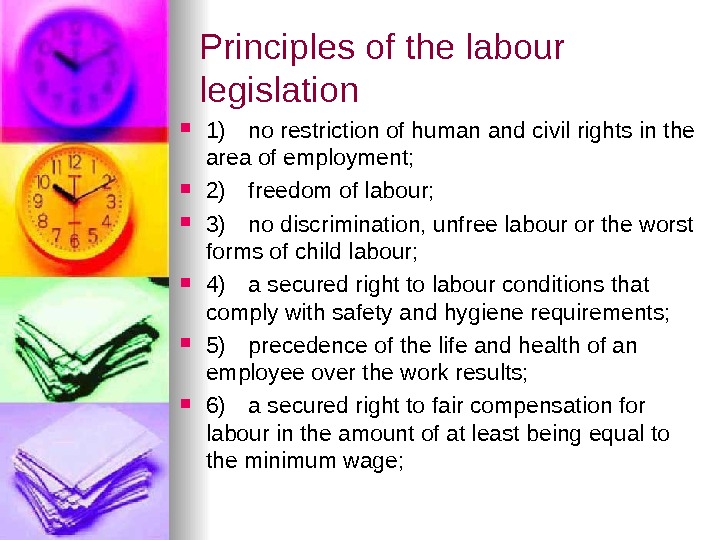
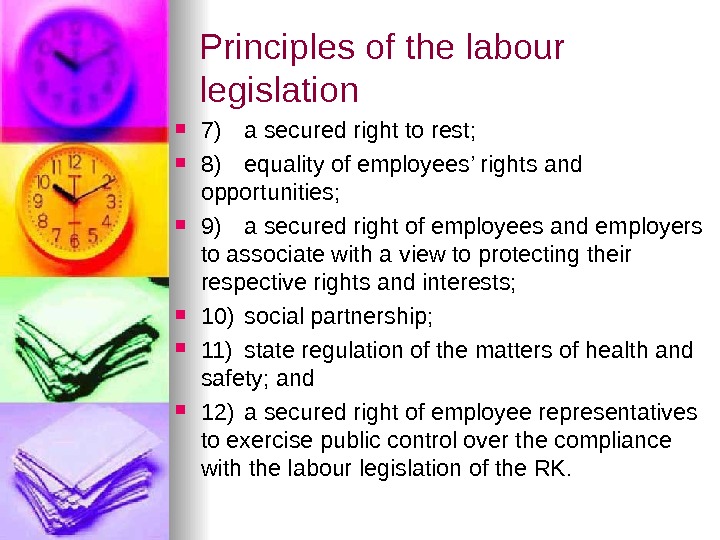
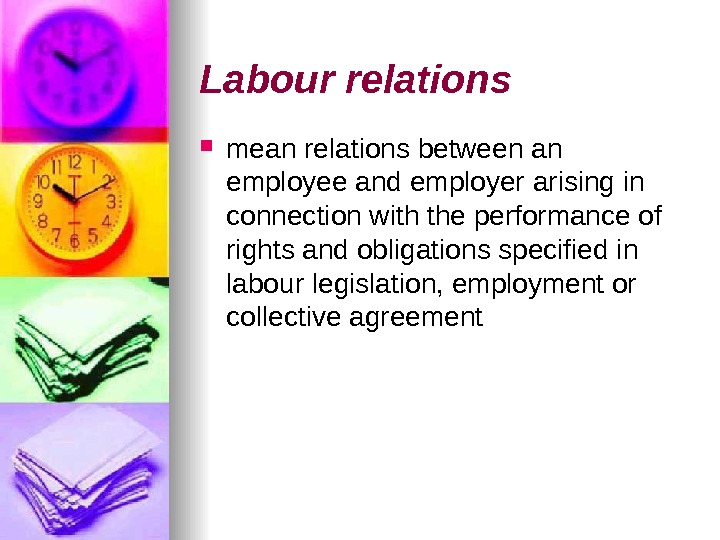

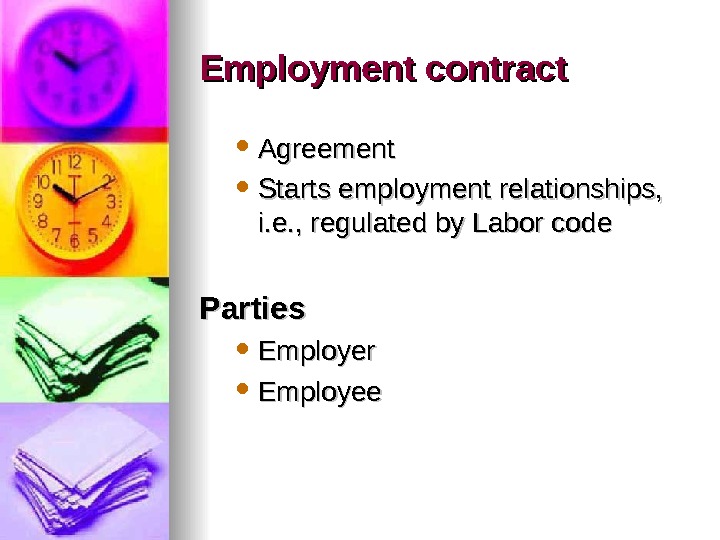
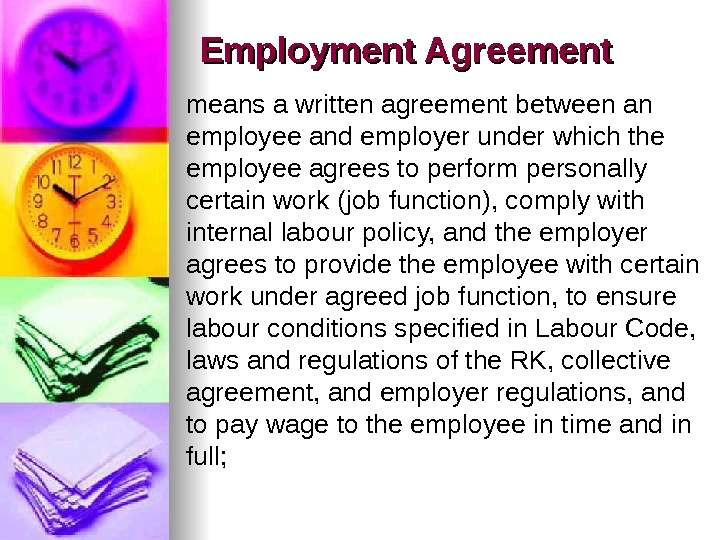
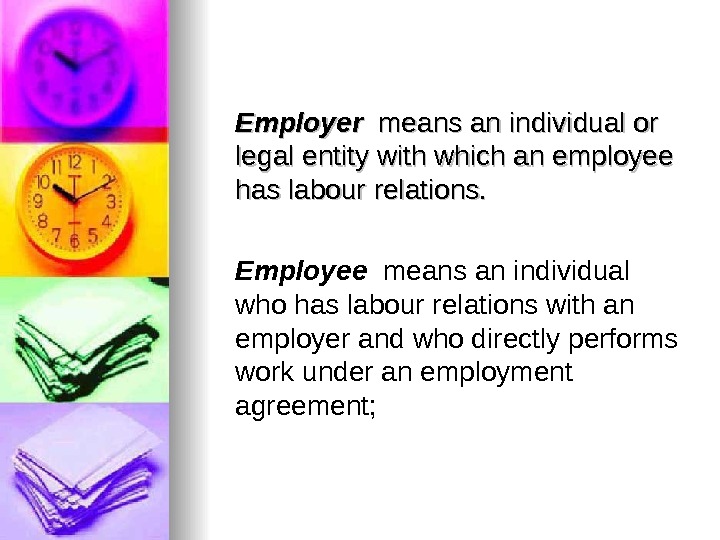
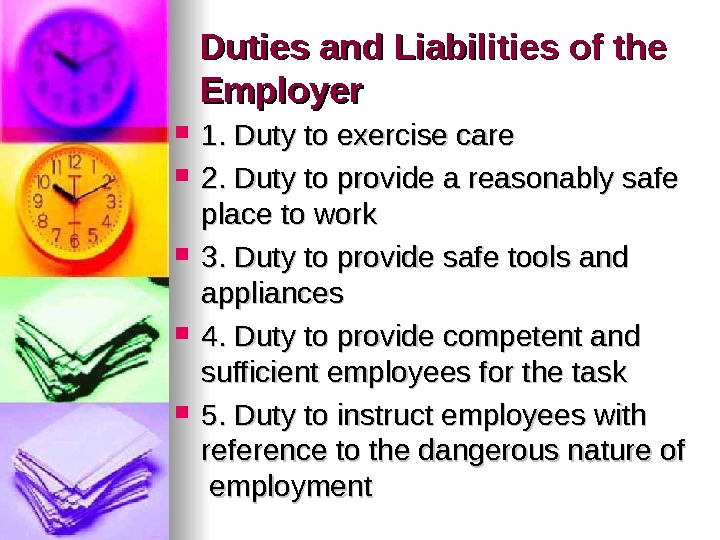
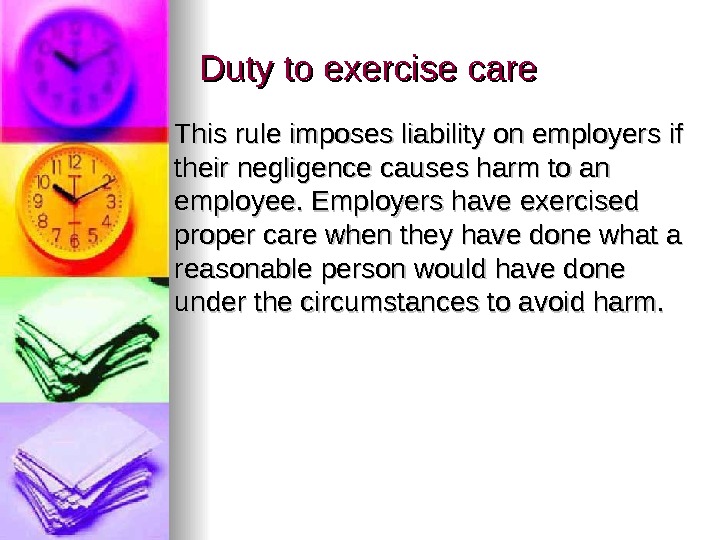
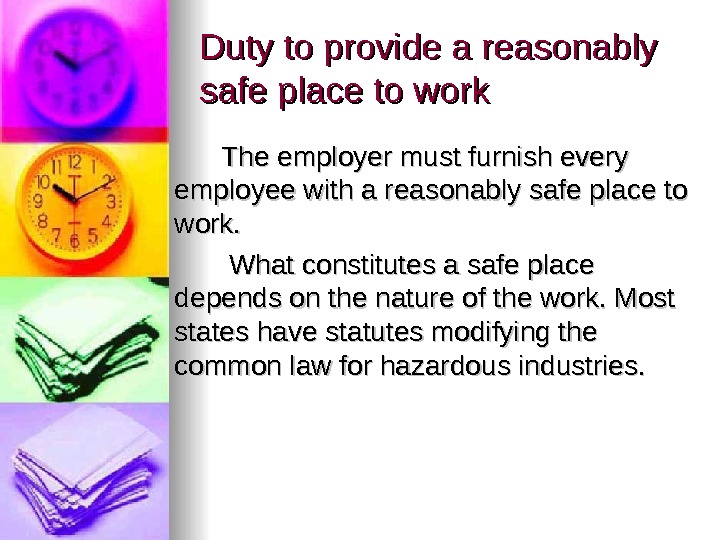
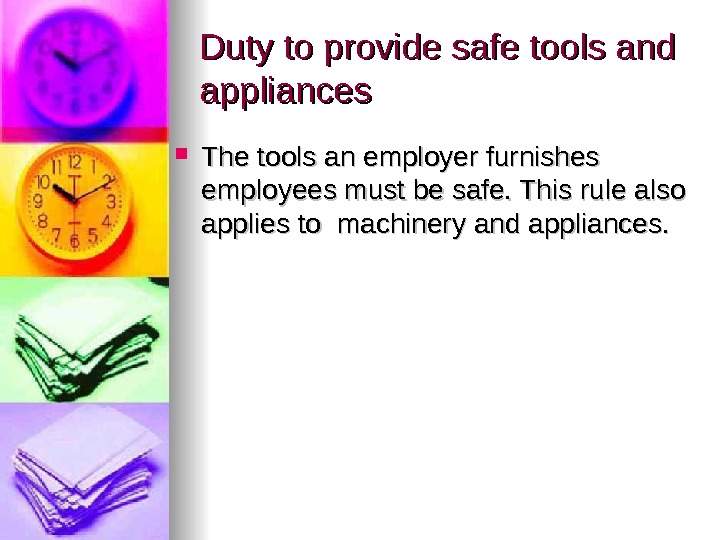
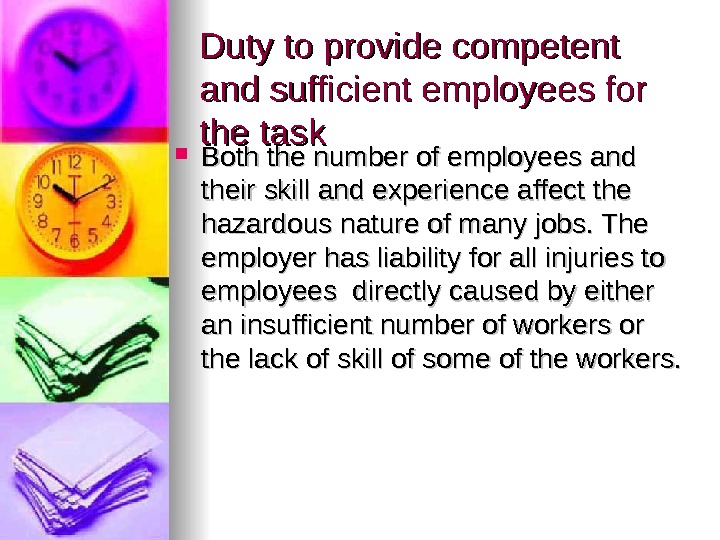

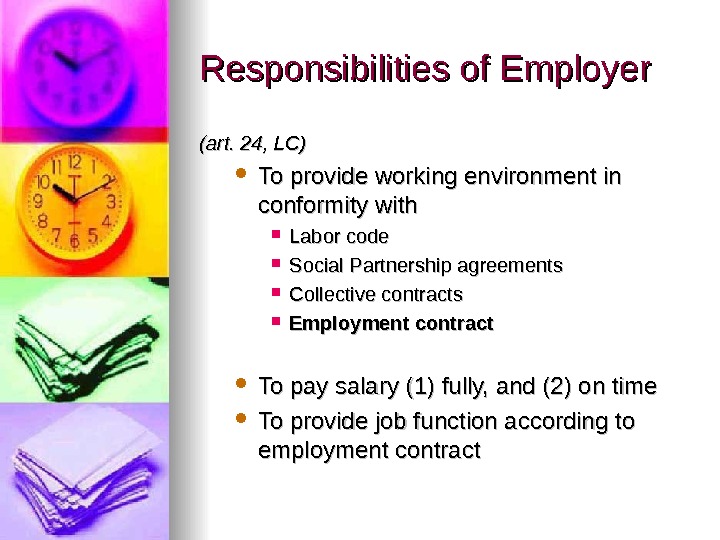
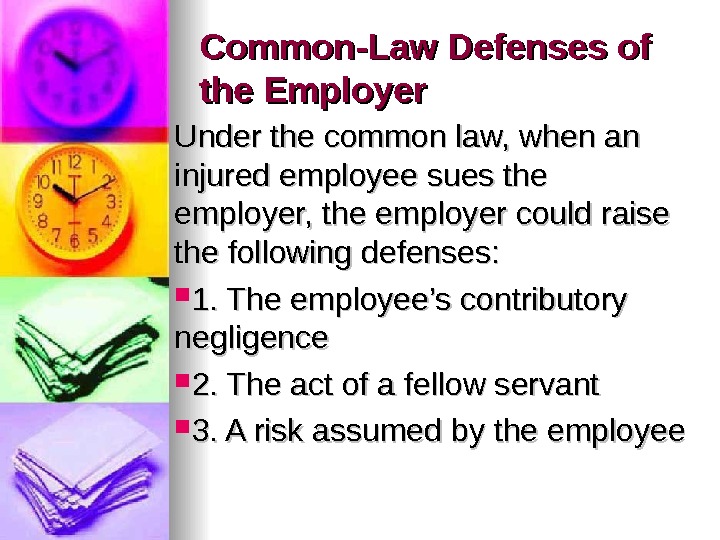
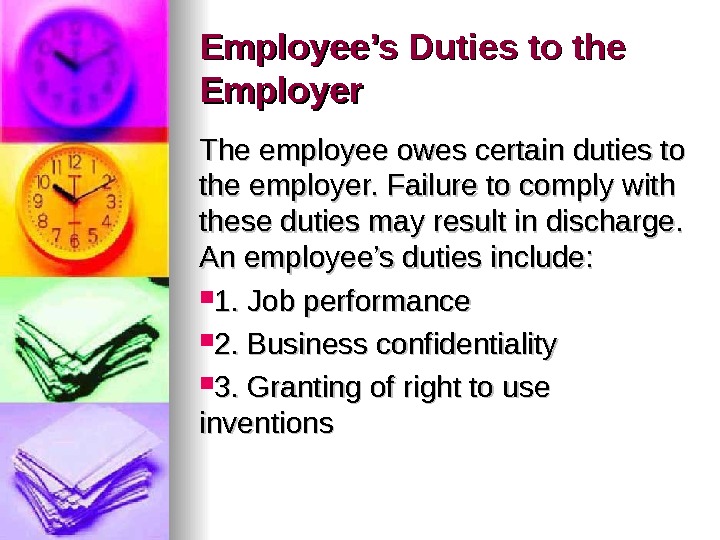

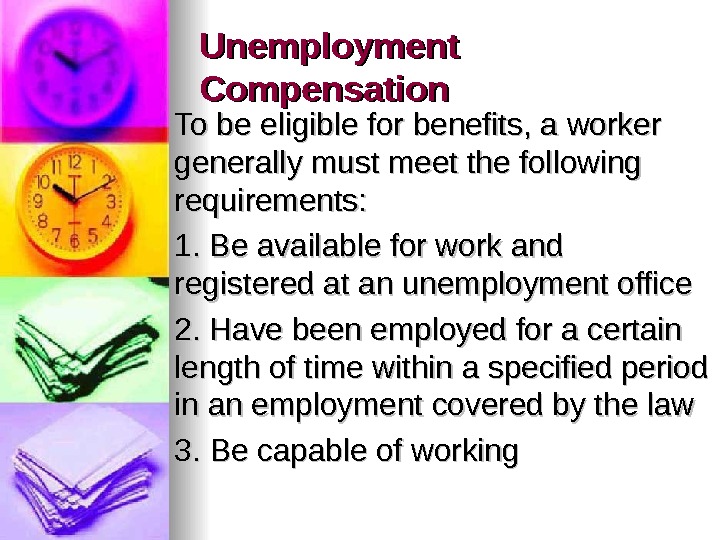
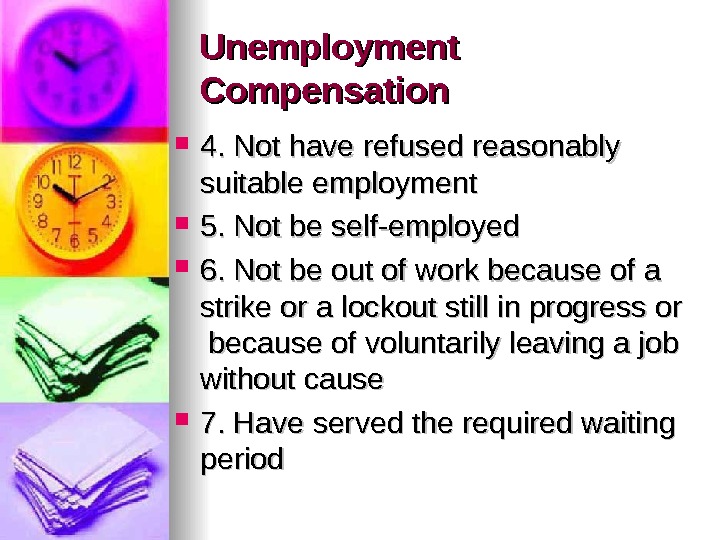
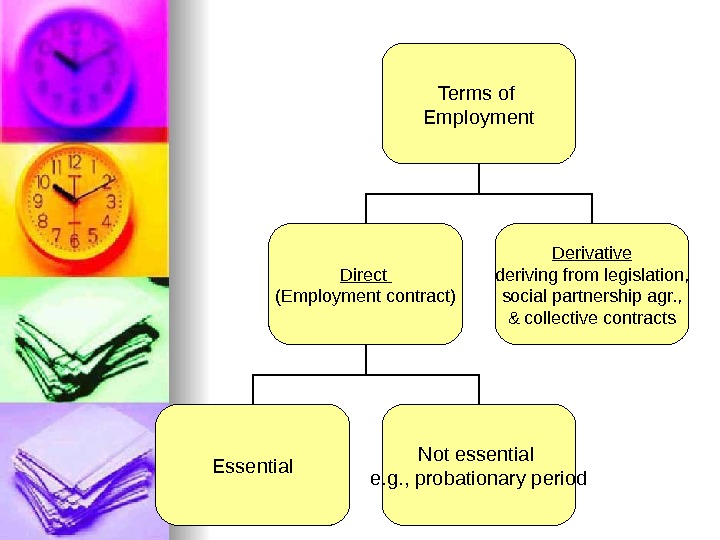
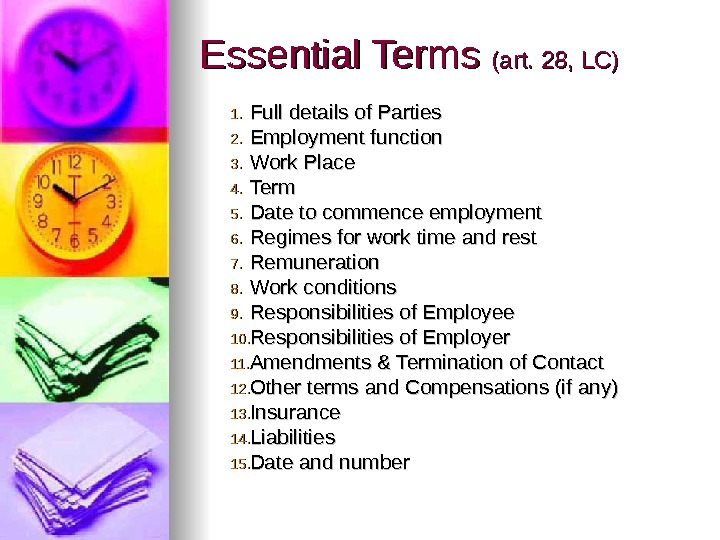
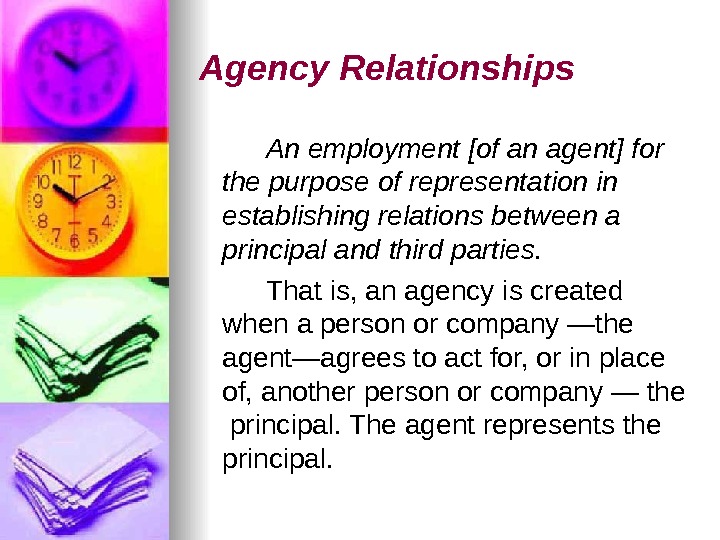
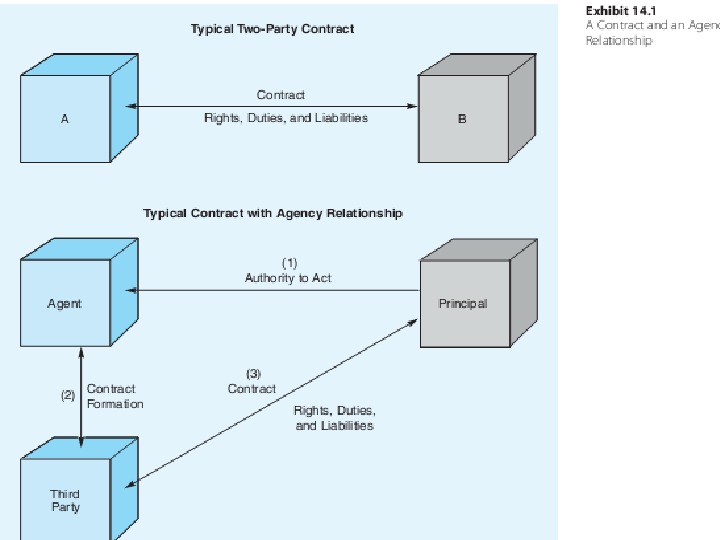
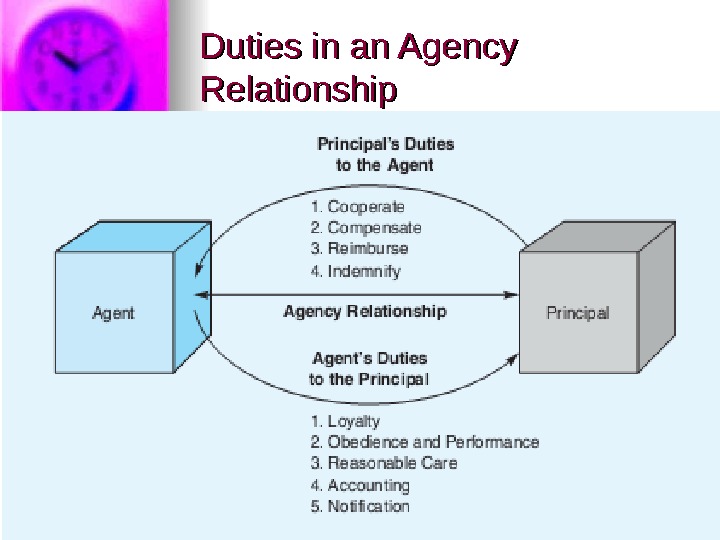
- Размер: 419 Кб
- Количество слайдов: 28
Описание презентации Labour Law 1. Labour Legislation 2. Employment & по слайдам
 Labour Law 1. Labour Legislation 2. Employment & Labour Regulations
Labour Law 1. Labour Legislation 2. Employment & Labour Regulations
 Labour legislation The labour legislation of the Republic of Kazakhstan is based on the Constitution of the Republic of Kazakhstan and consists of Labour Code and other laws and regulations of the Republic of Kazakhstan.
Labour legislation The labour legislation of the Republic of Kazakhstan is based on the Constitution of the Republic of Kazakhstan and consists of Labour Code and other laws and regulations of the Republic of Kazakhstan.
 Objective of the labour legislation The objective of the labour legislation is the legal regulation of labour relations and any other labour-related relations, which is intended to protect the rights and interests of parties to labour relations and to provide for minimum guarantees of employment-related rights and freedoms.
Objective of the labour legislation The objective of the labour legislation is the legal regulation of labour relations and any other labour-related relations, which is intended to protect the rights and interests of parties to labour relations and to provide for minimum guarantees of employment-related rights and freedoms.
 Purposes of the labour legislation The purposes of the labour legislation include the creation of required legal environment intended to reach a balance of interests of the parties to labour relations, economic growth, and productivity enhancement and human welfare.
Purposes of the labour legislation The purposes of the labour legislation include the creation of required legal environment intended to reach a balance of interests of the parties to labour relations, economic growth, and productivity enhancement and human welfare.
 Principles of the labour legislation 1) no restriction of human and civil rights in the area of employment; 2) freedom of labour; 3) no discrimination, unfree labour or the worst forms of child labour; 4) a secured right to labour conditions that comply with safety and hygiene requirements; 5) precedence of the life and health of an employee over the work results; 6) a secured right to fair compensation for labour in the amount of at least being equal to the minimum wage;
Principles of the labour legislation 1) no restriction of human and civil rights in the area of employment; 2) freedom of labour; 3) no discrimination, unfree labour or the worst forms of child labour; 4) a secured right to labour conditions that comply with safety and hygiene requirements; 5) precedence of the life and health of an employee over the work results; 6) a secured right to fair compensation for labour in the amount of at least being equal to the minimum wage;
 Principles of the labour legislation 7) a secured right to rest; 8) equality of employees’ rights and opportunities; 9) a secured right of employees and employers to associate with a view to protecting their respective rights and interests; 10) social partnership; 11) state regulation of the matters of health and safety; and 12) a secured right of employee representatives to exercise public control over the compliance with the labour legislation of the RK.
Principles of the labour legislation 7) a secured right to rest; 8) equality of employees’ rights and opportunities; 9) a secured right of employees and employers to associate with a view to protecting their respective rights and interests; 10) social partnership; 11) state regulation of the matters of health and safety; and 12) a secured right of employee representatives to exercise public control over the compliance with the labour legislation of the RK.
 Labour relations mean relations between an employee and employer arising in connection with the performance of rights and obligations specified in labour legislation, employment or collective agreement
Labour relations mean relations between an employee and employer arising in connection with the performance of rights and obligations specified in labour legislation, employment or collective agreement
 Creation of Employer and Employee Relationship The relationship of employer and employee arises only from a contract of employment, either express or implied. The common law allowed employers the right to hire whomever they wanted and employees the right to freely choose their employers.
Creation of Employer and Employee Relationship The relationship of employer and employee arises only from a contract of employment, either express or implied. The common law allowed employers the right to hire whomever they wanted and employees the right to freely choose their employers.
 Employment contract Agreement Starts employment relationships, i. e. , regulated by Labor code Parties Employer Employee
Employment contract Agreement Starts employment relationships, i. e. , regulated by Labor code Parties Employer Employee
 Employment Agreement means a written agreement between an employee and employer under which the employee agrees to perform personally certain work (job function), comply with internal labour policy, and the employer agrees to provide the employee with certain work under agreed job function, to ensure labour conditions specified in Labour Code, laws and regulations of the RK, collective agreement, and employer regulations, and to pay wage to the employee in time and in full;
Employment Agreement means a written agreement between an employee and employer under which the employee agrees to perform personally certain work (job function), comply with internal labour policy, and the employer agrees to provide the employee with certain work under agreed job function, to ensure labour conditions specified in Labour Code, laws and regulations of the RK, collective agreement, and employer regulations, and to pay wage to the employee in time and in full;
 Employer means an individual or legal entity with which an employee has labour relations. Employee means an individual who has labour relations with an employer and who directly performs work under an employment agreement;
Employer means an individual or legal entity with which an employee has labour relations. Employee means an individual who has labour relations with an employer and who directly performs work under an employment agreement;
 Duties and Liabilities of the Employer 1. Duty to exercise care 2. Duty to provide a reasonably safe place to work 3. Duty to provide safe tools and appliances 4. Duty to provide competent and sufficient employees for the task 5. Duty to instruct employees with reference to the dangerous nature of employment
Duties and Liabilities of the Employer 1. Duty to exercise care 2. Duty to provide a reasonably safe place to work 3. Duty to provide safe tools and appliances 4. Duty to provide competent and sufficient employees for the task 5. Duty to instruct employees with reference to the dangerous nature of employment
 Duty to exercise care This rule imposes liability on employers if their negligence causes harm to an employee. Employers have exercised proper care when they have done what a reasonable person would have done under the circumstances to avoid harm.
Duty to exercise care This rule imposes liability on employers if their negligence causes harm to an employee. Employers have exercised proper care when they have done what a reasonable person would have done under the circumstances to avoid harm.
 Duty to provide a reasonably safe place to work The employer must furnish every employee with a reasonably safe place to work. What constitutes a safe place depends on the nature of the work. Most states have statutes modifying the common law for hazardous industries.
Duty to provide a reasonably safe place to work The employer must furnish every employee with a reasonably safe place to work. What constitutes a safe place depends on the nature of the work. Most states have statutes modifying the common law for hazardous industries.
 Duty to provide safe tools and appliances The tools an employer furnishes employees must be safe. This rule also applies to machinery and appliances.
Duty to provide safe tools and appliances The tools an employer furnishes employees must be safe. This rule also applies to machinery and appliances.
 Duty to provide competent and sufficient employees for the task Both the number of employees and their skill and experience affect the hazardous nature of many jobs. The employer has liability for all injuries to employees directly caused by either an insufficient number of workers or the lack of skill of some of the workers.
Duty to provide competent and sufficient employees for the task Both the number of employees and their skill and experience affect the hazardous nature of many jobs. The employer has liability for all injuries to employees directly caused by either an insufficient number of workers or the lack of skill of some of the workers.
 Duty to instruct employees In all positions that use machinery, chemicals, electric appliances, and other production instruments, there are many hazards. The law requires the employer to give that degree of instruction to a new employee that a reasonable person would give under the circumstances to avoid reasonably foreseeable harm that could result from a failure to give such instructions.
Duty to instruct employees In all positions that use machinery, chemicals, electric appliances, and other production instruments, there are many hazards. The law requires the employer to give that degree of instruction to a new employee that a reasonable person would give under the circumstances to avoid reasonably foreseeable harm that could result from a failure to give such instructions.
 Responsibilities of Employer (art. 24, LC) To provide working environment in conformity with Labor code Social Partnership agreements Collective contracts Employment contract To pay salary (1) fully, and (2) on time To provide job function according to employment contract
Responsibilities of Employer (art. 24, LC) To provide working environment in conformity with Labor code Social Partnership agreements Collective contracts Employment contract To pay salary (1) fully, and (2) on time To provide job function according to employment contract
 Common-Law Defenses of the Employer Under the common law, when an injured employee sues the employer, the employer could raise the following defenses: 1. The employee’s contributory negligence 2. The act of a fellow servant 3. A risk assumed by the employee
Common-Law Defenses of the Employer Under the common law, when an injured employee sues the employer, the employer could raise the following defenses: 1. The employee’s contributory negligence 2. The act of a fellow servant 3. A risk assumed by the employee
 Employee’s Duties to the Employer The employee owes certain duties to the employer. Failure to comply with these duties may result in discharge. An employee’s duties include: 1. Job performance 2. Business confidentiality 3. Granting of right to use inventions
Employee’s Duties to the Employer The employee owes certain duties to the employer. Failure to comply with these duties may result in discharge. An employee’s duties include: 1. Job performance 2. Business confidentiality 3. Granting of right to use inventions
 Responsibilities of Employee (art. 24, LC) To observe Rules of Internal Procedures To implement his job function
Responsibilities of Employee (art. 24, LC) To observe Rules of Internal Procedures To implement his job function
 Unemployment Compensation To be eligible for benefits, a worker generally must meet the following requirements: 1. Be available for work and registered at an unemployment office 2. Have been employed for a certain length of time within a specified period in an employment covered by the law 3. Be capable of working
Unemployment Compensation To be eligible for benefits, a worker generally must meet the following requirements: 1. Be available for work and registered at an unemployment office 2. Have been employed for a certain length of time within a specified period in an employment covered by the law 3. Be capable of working
 Unemployment Compensation 4. Not have refused reasonably suitable employment 5. Not be self-employed 6. Not be out of work because of a strike or a lockout still in progress or because of voluntarily leaving a job without cause 7. Have served the required waiting period
Unemployment Compensation 4. Not have refused reasonably suitable employment 5. Not be self-employed 6. Not be out of work because of a strike or a lockout still in progress or because of voluntarily leaving a job without cause 7. Have served the required waiting period
 Terms of Employment Direct ( Employment contract) Derivative deriving from legislation, social partnership agr. , & collective contracts Essential Not essential e. g. , probationary period
Terms of Employment Direct ( Employment contract) Derivative deriving from legislation, social partnership agr. , & collective contracts Essential Not essential e. g. , probationary period
 Essential Terms (art. 28, LC) 1. 1. Full details of Parties 2. 2. Employment function 3. 3. Work Place 4. 4. Term 5. 5. Date to commence employment 6. 6. Regimes for work time and rest 7. 7. Remuneration 8. 8. Work conditions 9. 9. Responsibilities of Employee 10. Responsibilities of Employer 11. Amendments & Termination of Contact 12. Other terms and Compensations (if any) 13. Insurance 14. Liabilities 15. Date and number
Essential Terms (art. 28, LC) 1. 1. Full details of Parties 2. 2. Employment function 3. 3. Work Place 4. 4. Term 5. 5. Date to commence employment 6. 6. Regimes for work time and rest 7. 7. Remuneration 8. 8. Work conditions 9. 9. Responsibilities of Employee 10. Responsibilities of Employer 11. Amendments & Termination of Contact 12. Other terms and Compensations (if any) 13. Insurance 14. Liabilities 15. Date and number
![Agency Relationships An employment [of an agent] for the purpose of representation in establishing Agency Relationships An employment [of an agent] for the purpose of representation in establishing](/docs//bus.law-4-5week_images/bus.law-4-5week_25.jpg) Agency Relationships An employment [of an agent] for the purpose of representation in establishing relations between a principal and third parties. That is, an agency is created when a person or company —the agent—agrees to act for, or in place of, another person or company — the principal. The agent represents the principal.
Agency Relationships An employment [of an agent] for the purpose of representation in establishing relations between a principal and third parties. That is, an agency is created when a person or company —the agent—agrees to act for, or in place of, another person or company — the principal. The agent represents the principal.

 Duties in an Agency Relationship
Duties in an Agency Relationship

